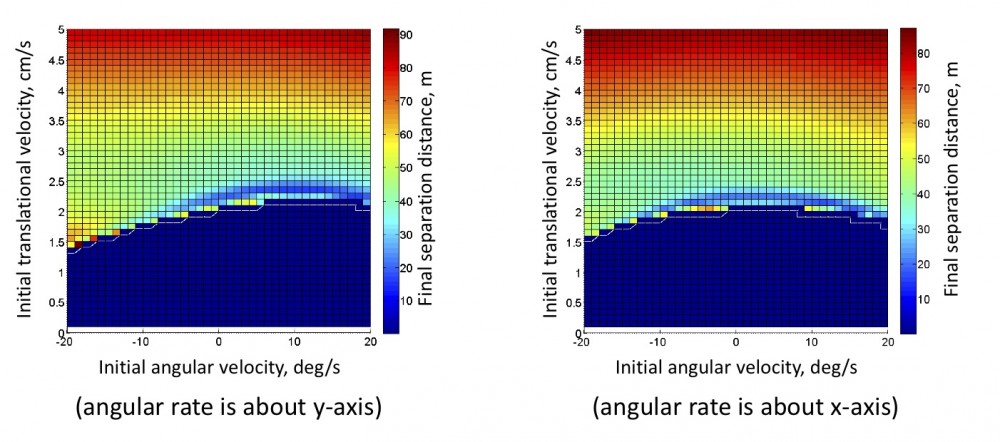Next Monday, March 4 at 4:30 PM, John Springmann from MXL will be presenting our work on the MCubed-1 and HRBE conjuction. For the last year and a half, both of these 1U CubeSats have been in exactly the same location indicating they are somehow docked. John will present some initial analysis based on the hypothesis that they are magnetically coupled.
Investigation of the On-Orbit Conjunction Between the MCubed and HRBE CubeSats
by John Springmann, Andrew Bertino-Reibstein, James Cutler
On October 28, 2011 six CubeSats were launched as secondary payloads with the NASA NPP satellite aboard a Delta II rocket. Two of the 1U CubeSats, MCubed and HRBE, became unintentionally stuck together on orbit. The conjunction has been verified through the Doppler characteristics of the periodic telemetry transmissions of both satellites and by the fact that the U.S. Joint Space Operations Center is providing a single two line element set for both objects. The exact cause of the conjunction is unknown, and it is hypothesized that it was caused by the magnets in both satellites. Both CubeSats include a permanent magnet for passive attitude control. We have developed a simulation to determine if magnetic conjunction is possible, and if so, under what range of initial conditions. Using the actual mass and magnetic properties of both satellites, we have shown that magnetic conjunction is possible if the initial translational separation velocity between the CubeSats is sufficiently slow. This study provides useful lessons learned for CubeSat developers as well as a method for further investigation into CubeSat deployment dynamics.

